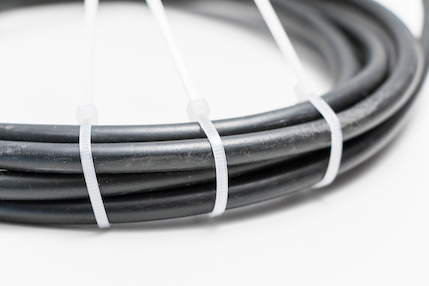Nylon is one of the most widely used engineering thermoplastics. It is frequently used as a replacement for bronze, brass, aluminum, steel, and other metals, as well as other plastics, wood, and rubber. It offers excellent mechanical performance while being cost effective, lightweight, and noise resistant. In addition, nylon can withstand sustained contact with a wide variety of chemicals, alkalis, dilute acids, and oxidizing agents.
There are many nylon grades available today, the most common being nylon 6/6 and nylon 6. The properties of these products are very similar and they can typically be used interchangeably. With that said, there are some advantages and limitations to each material. For example, nylon 6/6 has a higher melting point (by 70℉ / 21℃) and intermittent use temperature than cast nylon 6 and is less absorbent; however, because of its extrusion processing method, nylon 6/6 is limited to constant cross-section profiles and certain size constraints. Nylon 6 also typically offers better dimensional stability, machineability, and higher compressive and tensile strengths.
Nylons 11 and 12 are also available at a higher price point. These materials typically have lower water absorbency and better electrical properties. Certain additives are available to make these grades more flexible and ductile and they can also be cast.
There are a number of fillers available for nylon materials, the most common being molybdenum disulfide (MD). Nylon MD shares many of the same properties as natural nylon but with added load-bearing capacity, toughness, thermal properties, lubricity, and durability. Some other fillers include glass, oil, and carbon fiber.
Benefits
-
Low friction, self-lubricating, and high resistance to wear, abrasion, and vibration
-
High tensile strength
-
High impact resistance
-
High modulus of elasticity
-
Lightweight
-
Chemical resistance to alkalis, dilute acids or oxidizing agents
*Note: typical grades of nylon are NOT moisture-resistant or UV-resistant and typically have a relatively high coefficient of thermal expansion
Common Applications
-
Rollers, bearings, bushings, and gears
-
Wheels and wear components
-
Seals and washers
-
Sheaves and sprockets
-
Slides and cams
-
Electrical and semiconductor connectors
-
Steel and mining equipment
-
Automotive and transportation equipment
-
Food processing and bottling equipment
-
Sports & recreational equipment
Typical Nylon 6/6 Properties Chart
|
UNITS |
ASTM TEST |
Nylon |
|
|
Tensile strength |
psi |
D638 |
12,000 |
|
Flexural Modulus |
10^5 psi |
D790 |
440,000 |
|
Impact Strength, Izod |
ft-lbs/in of notch |
D256 |
1.0 |
|
Heat deflection temperature @ 264 psi |
°F |
D648 |
194 |
|
Max Service Temp – Long Term |
°F |
UL94 |
210 |
|
Water absorption (1/8” immersion 24 hours) |
% |
D570 |
1.2 |
|
Coefficient of thermal expansion |
10^5 in/in-°F |
D696 |
4.0 |
|
Elongation |
% |
D638 |
60 |
Values may vary. Please ask your Erie Industrial Plastics representative for more specific information.

